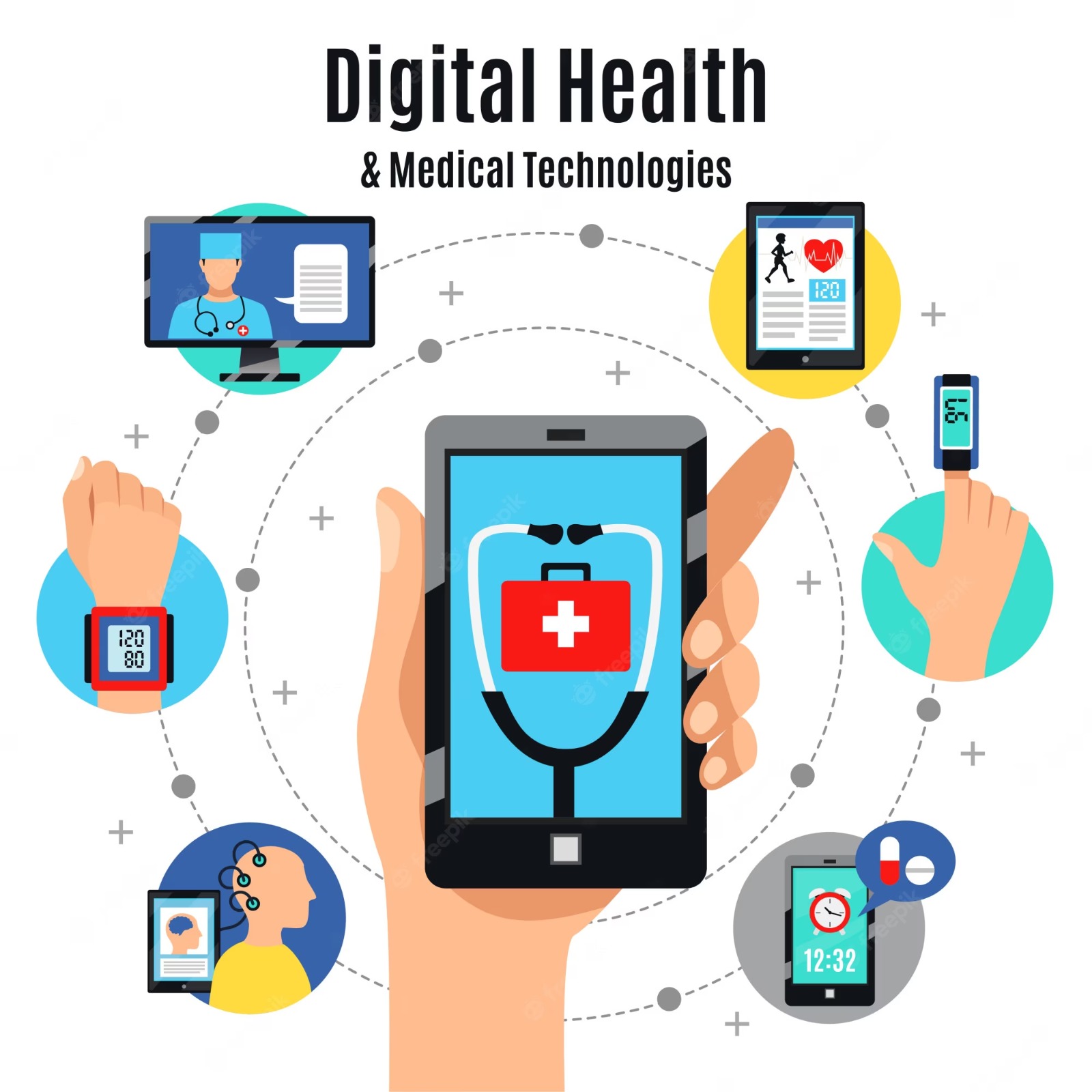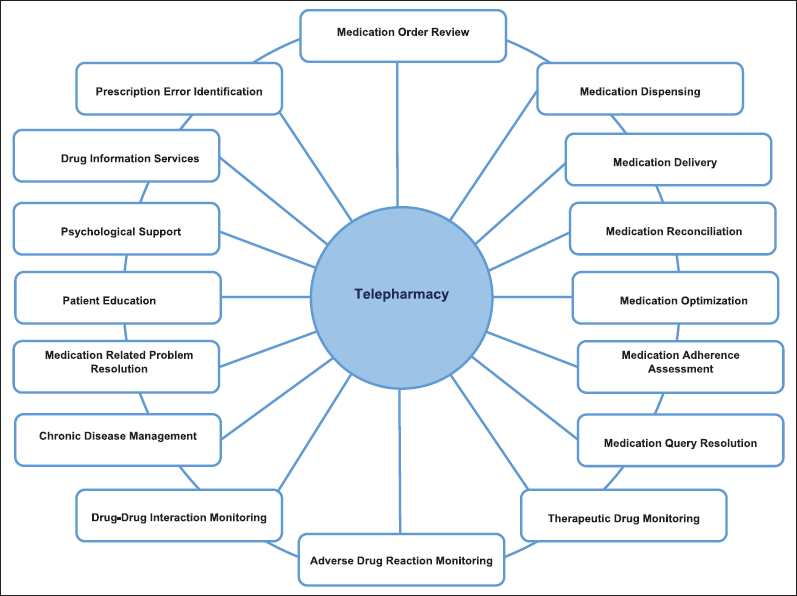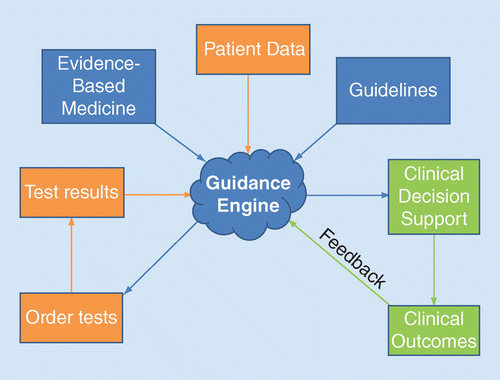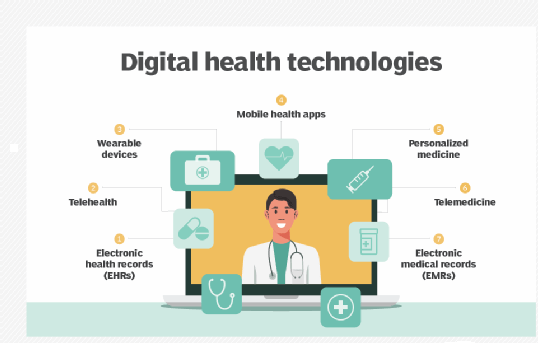In recent years, the convergence of digital technology and healthcare has given rise to a revolutionary concept known as digital health. Among its various components, telepharmacy stands out as a game-changer in healthcare delivery. With the ability to bridge geographic barriers and improve access to pharmaceutical care, telepharmacy is transforming the way patients receive medication and pharmacy services. In this blog post, we will explore the concept of digital health and delve into the significant impact of telepharmacy on modern healthcare. We will discuss its benefits, challenges, and future prospects, highlighting how it has revolutionized patient care.

I. Understanding Digital Health
Digital health encompasses a wide range of technologies and services aimed at enhancing healthcare delivery. It includes telemedicine, remote monitoring, mobile health applications, electronic health records (EHRs), wearable devices, and more. Digital health solutions enable patients and healthcare professionals to connect remotely, facilitating access to care and improving health outcomes. Within the realm of digital health, telepharmacy has emerged as a vital component, specifically focused on providing pharmacy services remotely.

II. The Role of Telepharmacy in Healthcare
Telepharmacy involves the use of technology to provide pharmaceutical care to patients from a remote location. It offers numerous advantages, especially for individuals residing in undeserved or rural areas, where access to pharmacy services may be limited. Telepharmacy enables patients to consult with pharmacists through video conferencing, phone calls, or secure messaging platforms. Pharmacists can provide medication counselling, answer questions, and address concerns related to prescriptions, over-the-counter medications, and potential drug interactions. They can also assist with medication adherence and provide necessary follow-up care.

III. Benefits of Telepharmacy
Telepharmacy brings several benefits that contribute to improved patient care. Firstly, it enhances accessibility, allowing patients in remote areas to access pharmacy services without the need to travel long distances. This is particularly valuable for individuals with limited mobility, the elderly, and those with chronic conditions. Telepharmacy also reduces waiting times, as patients can receive timely consultations from pharmacists without the need for physical appointments.
Moreover, telepharmacy promotes medication adherence by providing personalized counselling and support. Pharmacists can review patients’ medication regimens, identify potential issues, and offer guidance on proper usage. This helps patients understand their medications better, leading to improved adherence and better treatment outcomes. Telepharmacy also reduces medication errors by enabling pharmacists to review prescriptions remotely and provide accurate dosage instructions. Improved Access to Pharmacy Services: Telepharmacy overcomes geographical barriers, making pharmacy services more accessible to people in remote or undeserved areas. It ensures that individuals can receive necessary medications and pharmaceutical advice without having to travel long distances.
- Enhanced Medication Adherence: Telepharmacy enables pharmacists to remotely monitor patients’ medication adherence and provide real-time support. Through regular check-ins and reminders, pharmacists can help patients stay on track with their medication regimens, leading to better health outcomes.
- Medication Review and Counselling: Telepharmacy allows pharmacists to conduct comprehensive medication reviews and offer counselling sessions remotely. Patients can discuss their medication concerns, potential side effects, drug interactions, and receive appropriate recommendations from pharmacists without the need for in-person visits.
- Time and Cost Savings: Telepharmacy can save both time and money for patients. It eliminates the need for travel and reduces waiting times at physical pharmacies. Patients can conveniently consult with pharmacists from their homes or workplaces, reducing the overall burden on their schedules.
- Support for Healthcare Facilities: Telepharmacy can be particularly beneficial for healthcare facilities in rural or resource-limited areas. It provides access to pharmaceutical expertise and support, even if there is a shortage of local pharmacists. Telepharmacy can help these facilities maintain quality care and optimize medication management.
IV. Challenges and Considerations
While telepharmacy presents significant advantages, it also faces challenges that need to be addressed. One of the primary concerns is maintaining patient privacy and data security during remote consultations. Ensuring the use of secure communication platforms and adhering to strict privacy regulations is crucial to build patient trust.
Another challenge is the need for reliable and affordable internet connectivity, particularly in remote areas. Without stable internet access, patients may encounter difficulties in utilizing telepharmacy services effectively. Addressing these infrastructure gaps is essential to ensure equitable access to care.
Additionally, the regulatory landscape surrounding telepharmacy varies across regions. It is important for policy-makers to establish guidelines and frameworks that govern telepharmacy practices, ensuring patient safety and quality care delivery. Collaboration between healthcare providers, pharmacists, and regulatory bodies is vital to standardize telepharmacy operations.

V. The Future of Telepharmacy
The future of telepharmacy looks promising, as technological advancements continue to evolve. Integration with artificial intelligence (AI) and machine learning can enable automated medication monitoring, smart reminders, and personalized treatment recommendations. Furthermore, the incorporation of virtual reality (VR) and augmented reality (AR) technologies can enhance the patient. Telepharmacy, a concept that combines telecommunications technology with the pharmaceutical industry, is rapidly emerging as a game-changer in healthcare delivery. With the advent of advanced communication platforms and the increasing demand for convenient healthcare services, telepharmacy is poised to transform the way medications are dispensed, consultations are conducted, and patient care is provided. In this, we will explore the future of telepharmacy, its benefits, challenges, and the potential it holds for revolutionizing the healthcare industry.
VI. Improved Access to Medications and Healthcare Services:
One of the primary advantages of telepharmacy is its ability to bridge the gap in healthcare accessibility. Telepharmacy services enable patients in remote areas, undeserved communities, and those with limited mobility to receive timely access to medications and healthcare consultations. By leveraging telecommunication tools such as video conferencing, mobile apps, and online platforms, patients can consult with pharmacists and receive prescriptions without the need for in-person visits to brick-and-mortar pharmacies.
VII. Enhanced Medication Management:
Telepharmacy offers advanced medication management solutions that can significantly improve patient outcomes. Automated medication dispensing systems, medication therapy management software, and remote monitoring tools enable pharmacists to track medication adherence, identify potential drug interactions, and provide personalized recommendations to patients. These technologies empower patients to take a more active role in managing their medications, leading to better treatment compliance and reduced adverse effects.
VIII. Expansion of Clinical Pharmacy Services:
Telepharmacy opens up new possibilities for expanding clinical pharmacy services. Pharmacists can engage in virtual consultations, medication reviews, and patient counselling sessions, empowering them to play a more significant role in patient care. Remote monitoring technologies, such as wearable devices and IoT-enabled medication packaging, allow pharmacists to monitor patient health parameters and intervene promptly when necessary. This collaborative approach between pharmacists and other healthcare providers fosters comprehensive and patient-centric care.
IX. Medication Access in Crisis Situations:
During emergencies, natural disasters, or pandemics, access to medications becomes critical. Telepharmacy can prove invaluable in such situations by ensuring continued access to medications and healthcare services. Even in times of lockdowns or restricted movement, patients can receive prescriptions, medication counselling, and home delivery of essential medications through telepharmacy channels. This capability helps maintain continuity of care and mitigates potential health risks during challenging times.
X. Overcoming Challenges:
Despite the tremendous potential of telepharmacy, several challenges need to be addressed for its widespread adoption. Data security and privacy concerns, regulatory frameworks, and licensing requirements are critical factors that need to be addressed to ensure safe and ethical telepharmacy practices. Additionally, ensuring reliable internet connectivity and technological infrastructure in undeserved areas is essential to make telepharmacy accessible to all.
Conclusion:
The future of telepharmacy holds immense promise in transforming healthcare delivery. It offers improved access to medications and healthcare services, enhanced medication management, expanded clinical pharmacy services, and increased resilience during crisis situations. While challenges exist, stakeholders must work together to develop robust regulations, advance technological infrastructure, and prioritize patient privacy to maximize the potential of telepharmacy. By embracing telepharmacy, we can usher in a new era of patient-centric care that transcends geographical boundaries and empowers individuals to take charge of their health.


